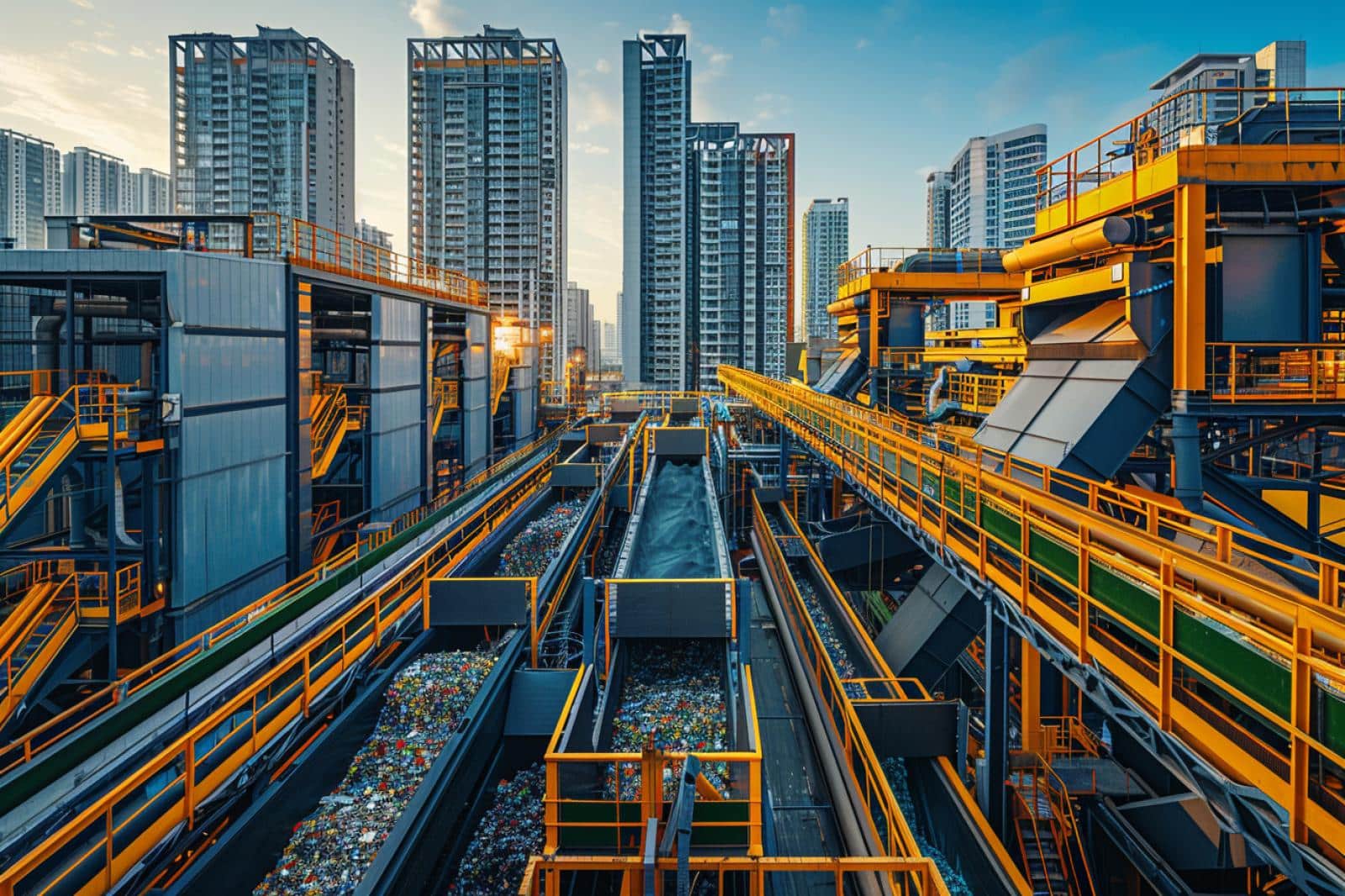What innovative waste management strategies can be employed in high-density real estate projects?

In modern cities, waste management has become a pressing issue. With the ever-growing urban population and the subsequent increase in construction and demolition (C&D) waste, innovative strategies are needed to address this problem. At the heart of this issue is sustainable building, a crucial element in urban development that advocates for efficient use of resources, reduction of waste, and recycling of materials. In this article, you’ll find enlightening discussions on various innovative waste management strategies in high-density real estate projects.
Addressing Waste Reduction at the Design Stage
As the famous saying goes, "Prevention is better than cure," and this is especially true in the realm of waste management. The best way to manage waste is to not produce it at all. But how is this possible in a construction site, where waste generation seems inevitable?
A voir aussi : How to leverage passive architectural design to reduce energy consumption in new real estate developments?
The answer lies in the design stage. By integrating waste reduction strategies at the earliest stage of the construction project, you can significantly reduce the amount of waste that will be produced. For instance, you can opt for green design principles, such as material efficiency and waste minimization.
Material efficiency involves designing buildings to use fewer materials or using alternative building methods that require less material. Similarly, waste minimization can be achieved by designing buildings for adaptability and longevity, thus reducing the need for demolition and new construction.
A découvrir également : How can real estate developments be designed to facilitate and encourage non-motorized transportation?
Incorporating Recycling in Construction Materials
The construction industry has traditionally been a major generator of waste. But with sustainable building practices, recycling can instead become a key player in the industry. Innovative strategies now allow for more of the waste produced on construction sites to be recycled into useful materials.
According to a scholar study found on Google, waste materials like concrete, metal, wood, and brick can be recycled and reused in the construction of new buildings. On-site recycling facilities can be set up to sort, process, and store these materials. Not only does this reduce the amount of C&D waste going to landfill, but it also reduces the demand for new materials, leading to significant cost savings.
Involving Waste Management in Project Development
Waste management should not be an afterthought in project development. Rather, it should be an integral part of the planning and execution process. This can be done by incorporating waste management strategies into the project’s development plan.
For instance, a waste management plan can be drawn up at the start of the project, outlining how waste will be reduced, recycled, or disposed of. This plan should cover all stages of the project, from design and construction to demolition and disposal.
In addition, waste management can be incorporated into the procurement process. For example, contractors could be required to demonstrate their waste management strategies as part of the tender process.
Deploying Technology for Better Waste Management
Technology is also playing a significant role in improving waste management in high-density real estate projects. For instance, numerous software applications now exist to assist in tracking and managing waste on the construction site.
One such application is Crossref, a tool that provides a variety of functionalities for construction waste management. This includes the ability to track waste materials, calculate the cost of waste, and generate reports for waste management.
Furthermore, technology can also aid in the recycling process. For instance, robotic technology can be used to sort and process waste materials on the construction site, thereby improving recycling rates and reducing reliance on landfill.
Partnering with Urban Cities for Sustainable Disposal
Finally, partnering with urban cities can also yield significant benefits in terms of waste management. For instance, many cities now have recycling programs in place for construction and demolition waste. By partnering with these cities, high-density real estate projects can ensure their waste is disposed of in a sustainable manner.
In addition, cities can also provide support in terms of waste management infrastructure. For instance, they can provide recycling facilities or landfill sites that are specifically designed to handle construction and demolition waste.
In conclusion, innovative waste management strategies are not only beneficial for the environment but also for the construction industry itself. By reducing waste, recycling materials, and incorporating waste management into project development, high-density real estate projects can become more sustainable and cost-effective.
Utilizing the Circular Economy Concept in Construction
In the context of waste management, the circular economy concept is an innovative strategy that is gaining traction. This approach seeks to maximize resource efficiency and minimize waste by promoting the use of recycled materials and reducing the need for new resources. In the construction industry, this can be achieved by specifying the use of materials that are either made from recycled content or are easily recyclable at the end of their useful life.
The circular economy strategy can also promote the reuse of building components. For example, instead of demolishing an old building and sending the debris to landfill, the building can be deconstructed and its components used in other construction projects. This not only reduces the amount of C&D waste but also conserves the energy and resources that would have been used to produce new building components.
Moreover, the circular economy approach encourages the design of buildings that can be easily adapted to changing needs, thus extending their lifespan and reducing the need for new construction. This can be achieved through modular design, where buildings are composed of interchangeable parts that can be easily replaced or rearranged.
In a high-density real estate project, the circular economy approach can yield significant benefits. According to a study found on Google Scholar, implementing circular economy strategies in the construction sector could reduce waste by up to 70%.
Leveraging Waste Reduction in Hong Kong’s High-Density Projects
Hong Kong is a prime example of a city that successfully employs innovative waste management strategies in high-density real estate projects. The city has long been challenged by waste management due to its high population density and limited land area. However, it has managed to turn this challenge into an opportunity through efficient waste reduction and recycling efforts.
For instance, Hong Kong has implemented a comprehensive construction waste management plan that includes measures such as waste sorting and recycling, landfill charging, and promotion of green building design. It also encourages the use of prefabricated building components, which reduces the amount of waste generated at the construction site.
Additionally, Hong Kong has developed an online Construction Waste Management System, which enables the tracking and monitoring of waste from construction sites. This not only facilitates effective waste management but also promotes transparency and accountability in the construction industry.
Hong Kong’s approach demonstrates how high-density real estate projects can be successful in managing waste. It offers valuable lessons that can be applied in other urban areas facing similar challenges.
Conclusion
Innovative waste management strategies are vital for high-density real estate projects in today’s rapidly urbanizing world. Emphasizing waste reduction at the design stage, incorporating recycling, involving waste management in project development, deploying technology, and partnering with urban cities are all important facets of an effective strategy.
The circular economy concept and the successful application of waste reduction strategies in Hong Kong particularly offer insightful lessons. They underline the potential of innovative strategies in reducing C&D waste, promoting material efficiency, and contributing to a sustainable future.
Embracing these innovative strategies is not just about environmental responsibility. It also makes good business sense, as it can lead to substantial cost savings and enhance the long-term value of real estate projects. As the construction industry continues to evolve, the importance of sustainable and innovative waste management strategies will only continue to grow.
